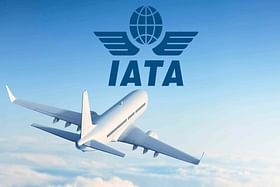The International Air Transport Association (IATA) reports that India is becoming a significant aviation market.
India’s domestic air travel grew strongly and by February was only 2.2 per cent below pre-pandemic levels based on passenger revenue kilometres (PRK).
In the latest aviation industry report measuring the passenger load factor (PLF) metric for various domestic markets, the Indian domestic passenger market emerged as the leader among the US, China, and Japanese domestic markets.
The market has consistently recorded the highest PLF for the past four months, with February registering 81.6 per cent, January at 85.2 per cent, December 2022 at 88.9 per cent, and November 2022 at 87.9 per cent.
In February 2023, global traffic increased by 55.5 per cent compared to the previous year, reaching 84.9 per cent of February 2019 levels based on RPKs.
According to a report, Asia-Pacific Airlines saw a significant increase in air traffic in February 2023, with a rise of 378.7 per cent compared to February 2022. There has been a positive trend in travel since the region lifted its travel restrictions. Capacity also increased by 176.4 per cent, and the load factor improved by 34.9 per cent.
The region achieved the second-highest load factor at 82.5 per cent among regions, indicating strengthened demand for air travel.
In February, domestic air passenger traffic increased by 25.2 per cent compared to the previous year. Domestic traffic for February 2023 was at 97.2 per cent of the February 2019 level.
India has only around 35 to 40 million air travellers every year, several of whom are repeat flyers, compared to China’s 660 million air transport passengers in 2019, despite the two countries sharing similar populations. Pre-COVID data from the World Bank indicates that India had about 168 million air transport passengers. Furthermore, Chinese airlines have roughly five times as many planes as their Indian counterparts.
India’s growing middle class and income rise, coupled with lower airfares, are prompting airline companies to predict significant growth in India’s aviation market for the foreseeable future.
According to ch-aviation, the French Finance Minister claimed that IndiGo Airlines is expected to make an announcement at the Paris Air Show in June regarding an order of several hundred Airbus planes.
IndiGo is the biggest Indian airline with more than 300 planes. Presently, it offers over 35 per cent of all available seat kilometres on inbound and outbound flights in India. By flight frequencies, the airline operates almost 48 per cent of all domestic and international flights in India.
Air India made a record-breaking order of 470 aircraft in February. The order included 250 planes from Airbus and 220 from Boeing, surpassing the previous largest orders made by IndiGo in 2017 and American Airlines in 2011 for 420 and 460 planes respectively.
Foreign airlines showing interest in India’s aviation market along with manufacturers.
Singapore Airlines has invested USD267 million in the newly revamped Air India group after its takeover by Tata Sons. The investment grants it a 25.1% stake in the airline, in addition to its earlier capital injection in Vistara Airlines, scheduled to merge with Air India.
SIA’s statement during the announcement stated that the merged entity with Vistara would be considerably larger, with a strong presence in all key airline segments in India. This proposed merger will strengthen SIA’s multi-hub strategy, enhance its reach in India, and enable direct participation in this growing aviation market.
New Etihad Airways CEO Antonoaldo Neves plans to expand the airline’s presence in India’s aviation market.
The ex-CEO of TAP Air Portugal, in an interview with Reuters on 27 April, revealed that India is among Etihad’s top three markets, with the country being a priority for them; however, he didn’t mention the other two.
Etihad plans to launch flights to six Indian cities it currently does not serve, in addition to Delhi and Mumbai.
Etihad plans to increase its fleet to 150 and carry 30 million annual passengers within the next decade, according to an announcement.
The Middle Eastern airline’s expansion strategy will prioritise medium and long-haul destinations while avoiding ultra-long-haul flights to ensure profitability. The focus will be on connecting China, Southeast Asia, India, and Gulf countries to Europe and the East Coast of the United States, according to Neves, a representative of the airline.
Etihad’s growth strategy will centre on code sharing and interline agreements, avoiding mergers or equity partnerships, stated CEO Neves. The company previously invested in Jet Airways, which is no longer operational.
ADQ gained complete ownership of Etihad in October 2020 and installed Neves, who revived Portugal’s TAP, as the new leader.
Etihad’s former approach of expanding at any cost is no longer feasible, according to Neves, due to the airline’s ownership by ADQ. Neves emphasized that profitability is necessary for growth, stating that they will only fly to profitable destinations based on their clear mandate.


